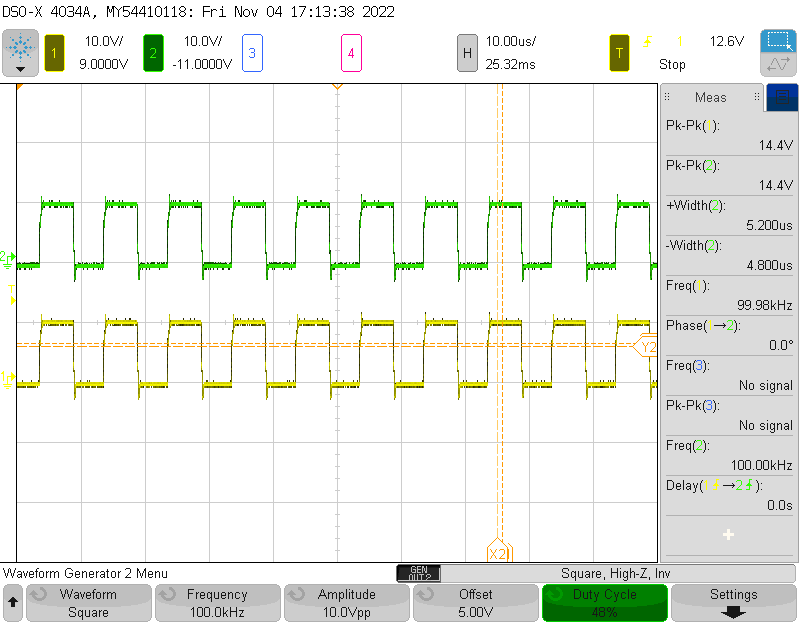My question is regarding the question previously asked Only low-side output from MOSFET drivers is working.
I was able to get the IRS2108 MOSFET driver to work.
By working, I mean that I can measure the output of the MOSFET driver.
My question is regarding the expected waveform of the respective driver.
From my understanding the input to the MOSFET driver is essentially the same waveform. The output, however, is supposed to be inverted from one another with a deadtime of about 500 ns.
The image from the datasheet.
The above image is the output waveform I scoped from the HO and LO of the respective driver. Here the LO is exactly the same but with negative voltage introduced. Not sure why that is.
Yellow: LO; Green: HO
I tried inverting the inputs just to see what would happen, and I get the exact same output waveform from the driver. Any ideas as to why that is so and if I have understood the datasheet of the MOSFET correctly?
This is the waveform when I connected the rest of the components, i.e., the capacitor, inductor and the coil. Both the waves are positive, and no difference between the two.
Edit 2:
I replaced the right MOSFET driver IC as suggested by @Andyaka. I now receive the following waveform:
Although the alternating square waves can be visible, there is still a alot of noise. There is also a significant drop off in the HO signal, which i think is attributed to the Bootstrap Capacitor. I increased the switching frequency to 150kHz, and have capacitor value to aprrox. 400nF which should resonate with the coil(6.3µH) at 100kHz. From what I have read the resonant frequency should be less than the switching frequency of the MOSFETs. The main point I want to ask is whether the waveform I measured now is the correct one? Or Is there maybe some other components that need to be changed/calculated to get the optimum waveform. I get the same waveform as the Green wave indicated in the above image at the output connector. Should this be alternating at the output connector?
With the current output waveform, I still don't have any output from the Rx side.

Coil : 7.5µH Cap: 330nF resonant frequency: 100kHz.





